Poging GOUD - Vrij
Strike Force
African Birdlife
|March/April 2022
Gannets are supremely adapted for plunge-diving. They lack external nostrils and have air sacs under their skin to cushion the impact of striking the water.

Gannets are supremely adapted for plunge-diving. They lack external nostrils and have air sacs under their skin to cushion the impact of striking the water. The full force of the strike is further minimised by their streamlined body form, and miniature accelerometers attached to gannets reveal that there is little effect on the birds as they hit the water, allowing them to maintain their momentum beneath its surface. Indeed, gannets typically slow their descent when they reach their prey by flaring their wings and feet.
The depth to which gannets plunge depends on the speed at which they enter the water and this is related to the height from which they dive. When feeding on prey that is well below the sea surface, gannets climb to some 40 metres above the water and then rely on gravity to accelerate up to 90 kilometres an hour and penetrate the water almost vertically. However, they can also dive at shallow angles, speeding up by flapping until just before they enter the water, when they extend their necks and stretch their wings back to smoothly break the surface.
Dit verhaal komt uit de March/April 2022-editie van African Birdlife.
Abonneer u op Magzter GOLD voor toegang tot duizenden zorgvuldig samengestelde premiumverhalen en meer dan 9000 tijdschriften en kranten.
Bent u al abonnee? Aanmelden
MEER VERHALEN VAN African Birdlife
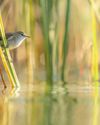
African Birdlife
stories begin at EYE LEVEL
ALTHOUGH I HAVE been taking photographs since 1998, it wasn't until 2019 that my hobby evolved into a serious pursuit. That's when I began to see photography not just as a means of capturing a moment, but as a form of art - something that can stir emotion, spark wonder and tell a deeper story.
1 mins
July/August 2025
African Birdlife
ALBERT the Wandering Albatross
Ahoy, shipmates, grab a pew and let me spin my yarn.
3 mins
July/August 2025
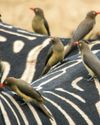
African Birdlife
I'll be back...
Southern African populations of oxpeckers were hit by triple hammer blows during the late 19th century and much of the 20th.
2 mins
July/August 2025

African Birdlife
BINDO and SABAP2
A match made in data science
2 mins
July/August 2025
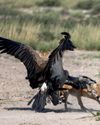
African Birdlife
PREDATORS of the pan
As regular visitors to Mabuasehube in the Botswanan sector of the Kgalagadi Transfrontier Park, we have often seen vulture feathers lying in the area of the waterhole at Mpayathutlwa Pan and have frequently observed a pair of black-backed jackals in the vicinity.
1 min
July/August 2025
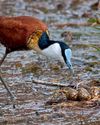
African Birdlife
Jacana & the egg thief
While on a photo expedition in the Richtersveld National Park with my brother Peter, we were watching one particular African Jacana on the Gariep River.
2 mins
July/August 2025
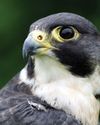
African Birdlife
A STRIPE FOR ANY OTHER PURPOSE?
Uncovering the adaptive complexities of falcons' malar stripes
2 mins
July/August 2025
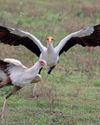
African Birdlife
grassland GLADIATORS
The Secretarybird is a highly soughtafter species for most birders on their first visit to Africa. It looks so strange, like a cross between a stork and an eagle. Even though it is widespread, occurring in almost any suitable habitat (grassland, open savanna and Karoo shrubland), it's generally uncommon.
1 mins
July/August 2025

African Birdlife
SECRETS SKY
Jessica Wilmot is the driving force behind BirdLife South Africa's Flyway and Migrants Project, working across borders to safeguard some of the planet's most threatened species and habitats. Supporting BirdLife International's East Atlantic Flyway Initiative, Jessica is at the heart of efforts to keep our skies alive with birds, particularly the enigmatic European Roller, which is her current focus and passion.
6 mins
July/August 2025
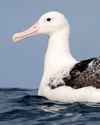
African Birdlife
Southern SIGHTINGS
Autumn is generally known to be quieter in terms of rarities across southern Africa, but the review period still had a few surprises for us, including a new species for the subregion. As always, none of the records included here have been adjudicated by any of the subregion's Rarities Committees.
3 mins
July/August 2025
Translate
Change font size
